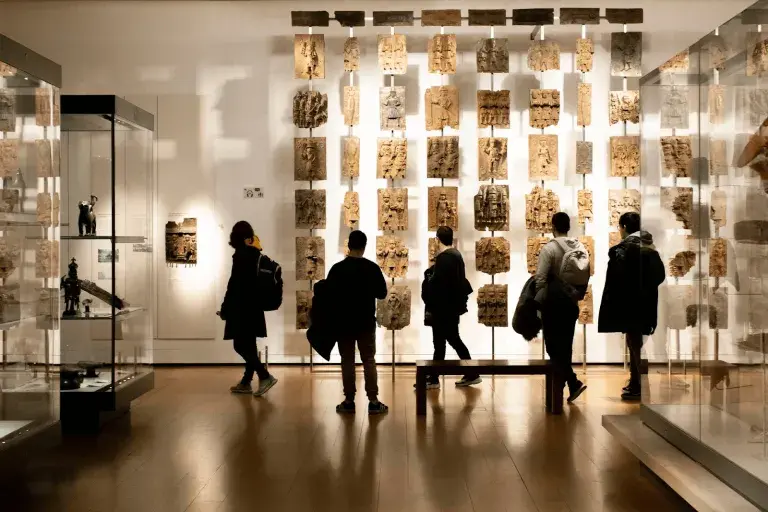Online Furniture Auctions: Buying and Selling Guide
For many collectors, furniture serves both practical and aesthetic purposes. Antique and vintage furniture can add character to a space and tie together your home. Attending a live, timed, or online furniture auction is one of the best ways to find inspiration. Additionally, consigning to furniture auctions online can give your unused furniture pieces a new life.
What are furniture auctions, and where should you start? Auction Daily presents a beginner’s guide to furniture buying and selling.

About Antique Furniture Auctions
The vintage furniture category includes items made in the 20th century or earlier. Pieces older than a century tend to be labeled “antique.” Unlike new furniture from a store, these used items tend to gain value as time passes and tastes change. A furniture item’s material, style, provenance, and restoration generally determine its market worth. Antique furniture auctions provide opportunities to browse styles and bid on collectible pieces. Online furniture auction trends and prices constantly change as time passes.
“Things that were made 10 or 20 years ago often fall out of favor, but there’s almost a generational shift,” Karen Keane, the CEO of Skinner, Inc., said to Forbes. “After 30 years, people start to reconsider things.”
Buying furniture at auction can be the first step to transforming your living space. Some auction houses specialize in vintage and antique furniture sales or offer dedicated events. Many sellers provide previews to collectors before a furniture auction. This gives potential bidders the chance to inspect lots and ask questions. Alternatively, collectors can explore online furniture auctions and browse by seller, style, period, and price point.

How to Navigate Vintage Furniture Auctions
Before diving into antique furniture auctions, it can be helpful to prepare in advance. Many collectors stick to one area of interest, such as American Craft or Art Deco. Online bidding platforms such as LiveAuctioneers, Invaluable, and Bidsquare maintain price databases for these categories. Researching fair prices for past furniture auctions online will help you make a realistic bidding plan. Other factors to consider before placing a bid include condition, documented provenance, and quality.
Most auction houses and bidding platforms offer alerts and email notifications to remind bidders about upcoming events. Before an online furniture auction starts, potential buyers must register in advance. Reading the specific terms and conditions of each vintage furniture auction beforehand will prevent unexpected fees and complications. Shipping costs should be calculated as well, particularly when buying online. Some sellers provide in-house shipping options, while others involve an external company.
Personal preference is the most important factor to keep in mind while preparing to bid. “The key when buying pieces is to acquire objects that you want to live with and that you derive pleasure from looking at each day,” Andrew Holter, an American furniture specialist at Christie’s, tells Town & Country.

What to Know About Selling Furniture at Auction
Buying items during a furniture auction online tends to be a straightforward process. However, it is sometimes difficult to determine where to sell and how to auction furniture. Dedicated collectors and curious individuals have several options. You can sell antique furniture privately through platforms such as eBay, Craigslist, or Etsy. Furniture dealers and consignment stores provide more streamlined options if you want to sell your furniture with less hassle. Dealers will buy a furniture item outright and resell it later. If you work with a consignment store, you will receive a portion of the proceeds after someone buys your item.
As you decide where to sell antique furniture from your home or collection, you can also consider working with an auction house. Dedicated vintage furniture auctions often yield higher prices thanks to competitive bidding. In-person or online furniture auctions can also connect you to a network of collectors, sellers, and appraisers.

How to Sell Antique Furniture at Auction
Once you have decided where to sell vintage furniture from your home or collection, the next step is to verify your ownership and contact an appraiser. If you have provenance information about a piece, appraisers can better estimate its worth and selling potential. Furniture specialists at auction houses often provide detailed appraisals. You can contact an auction house for these services through a website, online form, or direct phone call.
Appraisers and specialists can answer your specific questions about how to sell antique furniture and what your items may be worth. Auction houses provide estimates based on market trends and past prices. Some may set a reserve for your furniture item, indicating a pre-established minimum price. To sell your items in antique furniture auctions, you should plan to consign several months to a year in advance.
After negotiating a contract with an auction house, you can review the agreement and ship your items. Auction houses tend to offer themed sales based on a set schedule, allowing time to advertise and promote your furniture. You will receive payment or renegotiate unsold items after the auction concludes.
Looking to get started with furniture sales? Check out Auction Daily’s coverage of 20th-century designer George Nakashima, including his philosophy, style, and key pieces.









